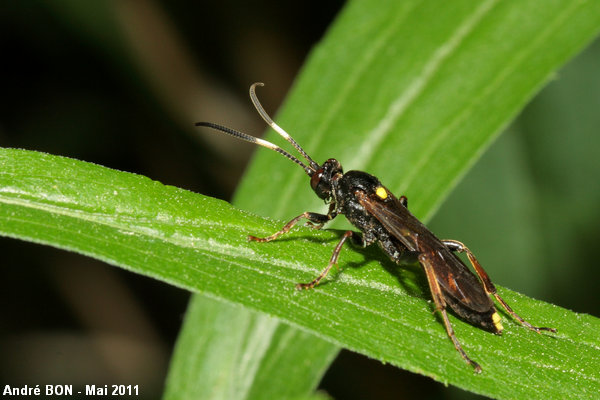
| Ichneumon extensorius (Linnaeus, 1758) |

|
|
Scientific name: Ichneumon extensorius (Linnaeus, 1758) Common name: French name: Ichneumon étendu Order: Hymenoptera Family: Ichneumonidae Wingspan : 8-16 mm. Biotope: Hedgerows, woodland areas. Geographic area: Palaearctic region. Observation period : March to November. Adults over winter under loose bark of dead wood. |
Ichneumon extensorius shows an important sexual dimorphism. Males have a black head and black antennae. The black thorax shows a white or pale yellow scutellum. The second and third abdomen segments are yellow. The other ones are black. The femora are black. The tibiae are yellow. Those of the hind legs are black near the apex. There are many Ichneumon species whose males show all the characteristics described above, like Ichneumon stramentor as an example. So it is very difficult to be more precise than Ichneumon sp. except if you ask for the help of an expert. Females have a black head. Their long and black antennae are ringed with white at mid length. The thorax is black and shows a white or pale yellow scutellum. The second and third abdomen segments are ferruginous. The following ones are black and marked with white or pale yellow on the upper side of the tip. The femora are black. The hind leg tibiae show a large reddish area followed by black on the apical third. The base of the hind leg tibiae is more yellowish on Ichneumon confusor. The larvae parasite caterpillars of several butterfly and moth families including Lycaneidae and Noctuidae. |
| [To know more about the Ichneumon extensorius] [Top] |

|
I have observed this female in a forest. You can guess the ferruginous colour of the second and third abdomen segments by transparency. The hind leg tibiae are clearly red with a black apical third. |